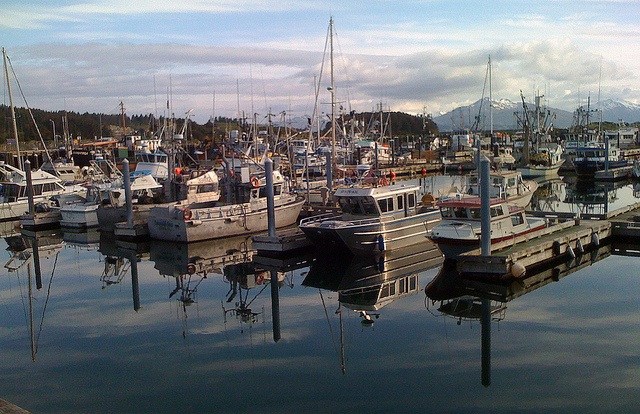
Under a draft plan released this summer, commercial fishermen in Southeast Alaska would get only a small portion of the $56.3 million appropriated by Congress to address a pink salmon disaster in 2016.
However, those who worked at seafood processing plants that year could be in line for some of the money as well.
A year and a half ago, the U.S. Commerce Secretary declared the 2016 pink season across the Gulf of Alaska a fishery failure due to unusual ocean and climate conditions. The state of Alaska and the National Oceanic and Atmospheric Administration have come up with a draft spending plan for how to allocate the money to fishermen, processors, municipalities and researchers.
The money will be paid out by an agency called the Pacific States Marine Fisheries Commission.
Sebastian O’Kelly is a lobbyist in the nation’s capital. His clients include the Petersburg borough and that commission. O’Kelly briefed the Petersburg borough assembly on the spending plan Monday.
“I wanna talk a little bit about the allocation and the break out and the criteria that will be used in distributing the relief because you will have fishermen, processors and the borough itself as active participants and recipients of this funding,” O’Kelly said.
The draft plan allocates $4.1 million for pink salmon research, including work to estimate the annual numbers of young salmon migrating from streams to the sea. More than half of the money, $32 million, will be paid to commercial fisherman, specifically permit holders who fished in 2016.
Over $20 million of that would go to fleets in Prince William Sound, nearly $7 million to Kodiak fishermen and $2.1 million to Southeast Alaska permit holders. That’s based on the value of catches in 2016 and how those compared to average catch values for those regions.
In addition, O’Kelly said $17.7 million would go to processing companies that operated that year.
“The processors will have to show their loss for that year and they have to have a plan for allocation of 75 percent of the amount that individual processors receives to the processing work force,” he said. “So this is a new, I’ve been around a lot of fisheries disasters, this is the first time I’ve seen those decisions made. So this will be a new process. So it will probably take a little bit of a while to sort out.”
Another $2.4 million would be paid out to municipalities like Petersburg where pink salmon were landed in 2016.
Public comment on the plan will be taken until 5 p.m. on Sept. 18. The state’s website with the draft plan and online comments can be found here.
Assembly member Eric Castro questioned O’Kelly about whether he expected there would be a disaster declaration for this year’s pink salmon run, which is less than half of the 2016 catch in Southeast.
O’Kelly explained it would likely take another two-year process, including a disaster request and funding from Congress.
“The combination of all these things, I’m giving you a very long-winded answer here, kind of explains why this process moves kind of about two years behind when an actual disaster happens but the short answer is yes,” O’Kelly said.
The pink salmon catch this year is expected to be the lowest in Southeast in over four decades.
